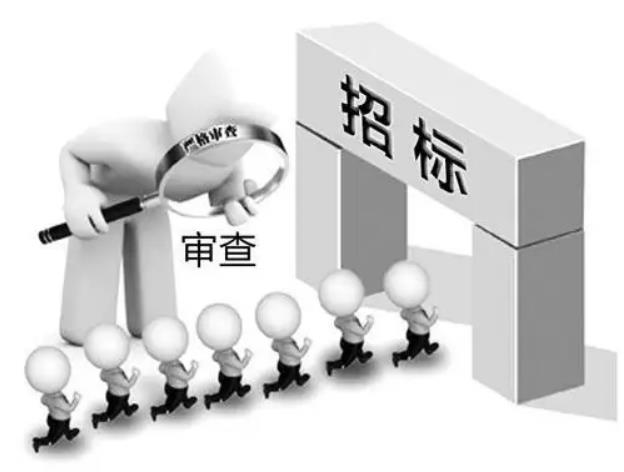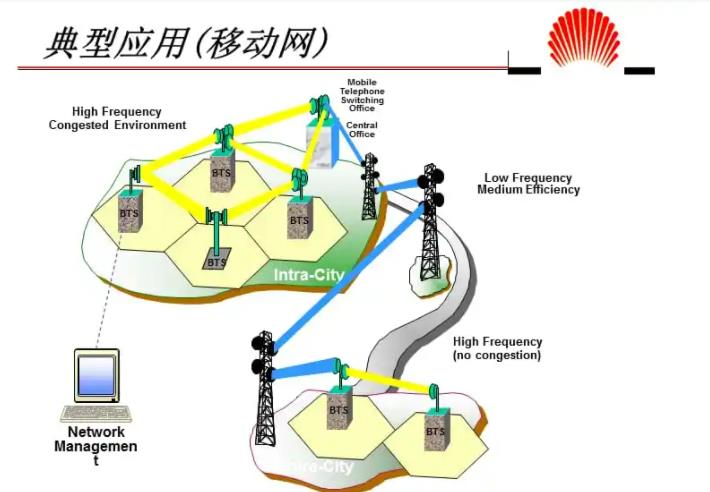讨论和总结
本文提出的理论是首次尝试在和谐概念的基础上对中国传播的普遍理论加以正式论述。作为中国文化的核心概念,“和谐”是中国人在人类交流过程中追求的终极目标。“和谐”也是中国社会衡量传播能力的主要标准。和谐原则受到中国文化中三种整体性本体假设(包括“变化”、“有序循环”和“不断运动”)的约束。和谐的实现,要求人们:将“仁”、“义”和“礼”三个原则加以内化;能够对“时”、“位”和“幾”三种因素加以适应;对“关系”、“面子”和“权力”加以适当运用。共有4个命题、23条原理和23条定律在文中得以总结。前三个假设叙述了中国文化的本体论基础,它们引出第四个假设,特别指出和谐是中国人传播行为的基础。除了第一条原理(指出和谐与能力之间的关系,从而成为其他原理/定律的基础)之外,所有原理都是从中国社会普遍范畴出发进行根本论述(primary statements),指出和谐与上述九个概念间的积极关系。除了定律9之外,所有定律都是从中国社会普遍范畴出发、具有经验有效性的附属性阐述(secondary statement),指出传播能力与一些概念(从上述九个概念中发展或推衍而来)之间的积极关系。为了对概念间的关系进行直接的检测,从而理解中国人的传播活动,未来的研究可以从间接来自这些原理或是直接来自这些定律的一系列假说开始(Hawes,1975)。
本文所建立的和谐理论设定了一种完整的方法,中国人借之将连续性带入永不停止的人类传播变化过程。中国人传播活动的这种和谐视角与西方截然不同。西方文化将效率或者说目标的实现看作衡量传播能力的主要因素,而中国人更多地强调通过恰当的做法和互惠的方式实现和谐(Chen& Starosta,1996)。本文的理论不仅反映了跨文化传播过程中的潜在问题,而且为人们提供了极好的机会去理解中国传播,从而在与中国人进行交流时实现跨文化理解。
不过,本文建立的理论不应该给读者们留下“文化和传播是一种线性过程”的印象。文化的动态性与复杂性本质告诉我们,人类传播是一个多方面的过程;在这一过程中,首要的文化价值会被有意识或无意识地用作一种工具,从而或明或暗地塑造其他核心价值。比如说,权力在社会和政治混乱时会被滥用,产生出消极的力量,对和谐的道德要求形成极大的挑战(Chen& Starosta,1997—1998)。Powers(1997—1998)对中国十年动乱期间冲突类型和管理策略的研究生动地说明了人们的行为如何偏离了中国传播的道德准则。Chen(1997)的研究同样反映了这样的现象:建立在资历基础上的由文化赋予的权威,可以在决策过程中被用于为个人谋利。
此外,等级关系和特定关系结构使得中国人对自己团体以外的人发展出一套非常不同的态度和行为。换句话说,在中国人的传播过程中,不遵守“仁”“义”“礼”原则的现象并不鲜见。比如,为了与团体外成员竞争稀缺资源,面子常常就顾不上了。中国文学中很多地方写到,一些人为了在日常交流中实现个人目的而运用承诺取得之策略(compliancegaining strategy)。这说明了中国传播的另一个方面,此时“和谐”并没有能在规范中国人的行为方面扮演重要角色(Chen,1995c;Chen&Zhong,1996;Chiao,1988b,1989;Chu,1991;Cleary,1988;Li,Yang&Tang,1989,Senger,1988;Wang,1976)。这种矛盾现象为未来研究提供了很好的机会,可以帮助人们更好地理解中国人的传播行为。
最后,中国人的传播活动还有一个方面很有意思,值得我们在未来的研究中进行深入探讨。若中国人在控制自身命运时感到无力,他们很容易在传播过程中采用一种宿命的态度和做法。“命”和“运”代表了中国人性格的这一方面(Chen,1996;Chen&Starosta,1997—1998)。在这种情况下,对于中国人来说,是否与他人发生联系/是否要置身于日常生活的其他方面就由一个人的“命”来决定。比如说,在关系的发展过程中,如果一个人命中注定要和另一个人在一起,他们就会将之视为“有缘”。相反,如果他们不能在一起,他们就会将之视为“无缘”。“命”和“运”一直对中国社会中“关系”的发展有巨大的影响(Chang&Holt,1993;Wen,1988)。在这一方面进行深入研究,一定可以为理解中国人的传播行为作出贡献。
*The article was originally published in V.H.Milhouse,M.K.Asante,and P.O.Nwosu(Eds.),Transcultural realities:Interdisciplinary perspectives on crosscultural relations(pp.5570).Thousand Oaks,CA:Sage.Reprinted by permission of Sage.
*本文最初发表于V.H.Milhouse,M.K.Asante,and P.O.Nwosu(Eds.),Transcultural realities:Interdisciplinary perspectives on crosscultural relations(《跨文化真实:从跨学科的视角看待跨文化关系》)(pp.5570).Thousand Oaks,CA:Sage.重刊已获Sage同意。
本文英文原发表于[China Media Research.2008;4(4):113]
References
Becker,C.B.(1986).Reasons for the lack of argumentation and debate in the Far East.International Journal of Intercultural Relations,10,7592.
Benedict,R.(1946).The chrysanthemum and the sword:Patterns of Japanese culture.Tokyo:Charles E.Tuttle.
Bond,M.B.&Hwang,K.(1986).The social psychology of Chinese people.In M.H.Bond(Ed.),The psychology of Chinese people(pp.213226).Hong Kong:Oxford University Press.
Broome,B.J.(1996).Exploring the Greek mosaic.Yarmouth,ME:Intercultural Press.
Cai,B.&Gonzalez,A.(1997—1998).The Three Gorges project:Technological discourse and the resolution of competing interests.Intercultural Communication Studies,7,101112.
Carmichael,C.W.(1991).Intercultural perspectives of aging.In L.A.Samovar&R.E.Porter(Eds.),Intercultural communication:A reader(pp.128135).Belmont,CA:Wadsworth.
Chai,C.&Chai,W.(1969).Introduction.In J.Legge(trans.),I Ching:Book of Changes.New York:Bantam.
Chang,HC.(1992,November).From words to communication:Some philosophical implications for Chinese interpersonal communication.Paper presented at the annual convention of Speech Communication Association,Atlanta,Georgia.
Chang,HC.&Holt,G.R.(1991).More than relationship:Chinese interaction and the principle of Guanhsi.Communication Quarterly,39,251271.
Chang,HC.&Holt,G.R.(1993).The concept of yuan and Chinese interpersonal relationships.In S.Ting-Toomey&F.Korzenny(Eds.),Crosscultural interpersonal communication(pp.2857).Newbury Park,CA:Sage.
Chen,D.C.(1987).Conf ucius thoughts.Taipei:Cheng Chuong.
Chen,G.M.(1989).Relationships of the dimensions of intercultural communication competence.Communication Quarterly,37,118133.
Chen.G.M.(1993,November).A Chinese perspective of communication competence.Paper presented at the annual convention of the Speech Communication Association,San Antonio,Texas.
Chen.G.M.(1995a,August).A Chinese model of human relationship development.Paper presented at the 5th International Conference on
Cross-Cultural Communication:East and West.Harbin,China.
Chen,G.M.(1995b).Differences in selfdisclosure patterns among Americans versus Chinese:A comparative study.Journal of Cross-Cultural Psychology,26,8491.
Chen.G.M.(1995c,November).A classif ication of Chinese persuasive communication strategies.Paper presented at the annual convention of the Speech Communication Association,New Orleans,Louisiana.
Chen,G.M.(1996,November).Feng shui:The Chinese art of space arrangement.Paper presented at the annual convention of the Speech Communication Association,San Diego,California.
Chen,G.M.(1997,November).An examination of PRC business negotiation styles.Paper presented at the annual convention of the Speech Communication Association,Chicago,Illinois.
Chen,G.M.(1998).A Chinese model of human relationship development.In B.L.Hoffer and H.H.Koo(Eds.),Crosscultural communication East and West in the 90's(pp.4553).San Antonio,TX:Institute for Cross-Cultural Research.
Chen,G.M.&Chung,J,(1994).The impact of Confucianism on organizational communication.Communication Quarterly,42,93105.
Chen,G.M.&Chung,J.(1997).The“Five Asian Dragons”:Management behaviors and organizational communication.In L.A.Samovar and R.E.Porter(Eds.),Intercultural communication:A reader(pp.317328).Belmont,CA:Wadsworth.
Chen,G.M.&Starosta,W.J.(1996).Intercultural communication competence:A synthesis.Communication Yearbook,19,353383.
Chen,G.M.&Starosta,W.J.(1997—1998).Chinese conflict management and resolution:Overview and implications.Intercultural Communication Studies,7,116.
Chen,G.M.&Starosta,W.J.(1998a).Foundations of intercultural communication.Needham Heights,MA:Allyn&Bacon.
Chen,G.M.&Starosta,W.J.(1998b).A review of the concept of intercultural sensitivity.Human Communication,1,116.
Chen,G.M.&Starosta,W.J.(1999).A review of the concept of intercultural awareness.Human Communication,2,2754.
Chen,G.M.&Starosta,W.J.(2000).Communication and global society:An introduction.In G.M.Chen and W.J.Starosta(Eds.),Communication and global society(pp.116).New York:Peter Lang.
Chen,G.M.&Xiao,XS(1993,November).The impact of“harmony”on Chinese negotiations.Paper presented at the annual convention of the Speech Communication Association,Miami Beach,Florida.
Chen,G.M.&Zhong,M.(1996,November).Dimensions of Chinese compliancegaining strategies.Paper presented at the annual convention of the Speech Communication Association,San Diego,California.
Cheng,CY.(1987).Chinese philosophy and contemporary human communication theory.In D.L.Kincaid(Ed.),Communication theory:Eastern and Western perspectives(pp.2343).New York:Academic.
Chiao,C.(1981).Chinese strategic behavior:Some central principles.Paper presented at the Conference on Content of Culture,Claremont,California.
Chiao,C.(1988a).On guanxi.In K.S.Yang(Ed.),The psychology of Chinese people(pp.105122).Taipei:Kuei Guan.
Chiao,C.(1988b).An establishment of a model of Chinese strategic behaviors.In K.S.Yang(Ed.),The psychology of Chinese people(pp.431446).Taipei:Kuei Guan.
Chiao,C.(1989).Chinese strategic behavior:Some general principles.In R.Bolton(Ed.),The content of culture:Constants and variants(pp.525537).New Haven,Conn:Hraf.
Chu,CN(1991).The Asian mind game.New York:Rawson.
Chu,J.L.(1988).The Chinese social interaction:a face perspective.In K.S.Yang(Ed.),The psychology of Chinese people(pp.238288).Taipei:Kuei Guan.
Chu,R.L.(1983).Empirical researches on the psychology of f ace.Doctoral dissertation,Taipei,Taiwan:National Taiwan University.
Chu,S.(1974).The interpretation of I Ching.Taipei:Wen Hua.
Chung,J.(1991,April).Seniority and particularistic ties in a Chinese conflict resolution process.Paper presented at the annual convention of Eastern Communication Association,Pittsburgh,Pennsylvania.
Chung,J.(1992,November).Equilibrium in the Confucianisminfluenced superiorsubordinate communication system.Paper presented at the annual convention of Speech Communication Association,Chicago,Illinois.
Chung,J.(1996).Avoiding a“Bull Moose”rebellion:particularistic ties,seniority,and thirdparty mediation.International and Intercultural Communication Annual,20,166185.
Cleary,T.(1988).The art of war.Boston,MA:Shambhala.
Condon,J.C.(1977).Interpersonal communication.New York:Macmillan.
Condon,J.C.(1984).With respect to the Japanese:A guide for Americans.Yarmouth,ME:Intercultural Press.
Condon,J.C.(1985).Good neighbors:Communicating with the Mexicans.Yarmouth,ME:Intercultural Press.
Condon,J.C.&Yousef,F.(1975).An introduction to intercultural communication.Indianapolis,IN:Bobbs Merill.
Conrad,C.(1994).Strategies organizational communication.New York:Harcourt Brace College Publishers.
Eberhard,W.(1971).Moral and social values of the Chinese—collected essays.Washington,DC:Chinese Materials and Research Aids Service Center.
Epstein,M.(1995).A f ter the f uture:The paradoxes of postmodernism and contemporary Russian culture.Amherst,MA:The University of Massachusetts Press.
Fang,T.H.(1981).Chinese philosophy:Its spirit and its development.Taipei:Linking.
Fingarette,H.(1972).Confucius:The secular as sacred.New York:Harper&Row.
Folger,J.P.Poole,M.S.&Strutman,r.K.(1993).Working through conf lict.New York:Harper Collins.
Fung,Y.L.(1983).A history of Chinese philosophy.Princeton,NJ:Princeton University Press.
Griffin,K.(1967).Interpersonal trust in smallgroup communication.Quarterly Journal of Speech,53,224234.
Gu,Y.J.(1992).Distinction of ingroup and outgroup.In C.Yiao(Ed.),The Chinese renqin and mientz(pp.2433).Beijing:Chinese Friendship.
Gudykunst,W.B.&Nishida,T.(1984).Social penetration in close relationships in Japan and the United States.In R.Bostrom(Ed.),Communication Yearbook,7.Beverly Hills,CA:Sage.
Gudykunst,W.B.&Ting-Toomey,S.(1988).Culture and interpersonal communication.Newbury Park,CA:Sage.
Hall,E.T.(1976).Beyond culture.Garden city,NY:Anchor.
Harnett,D.L.&Cummings,I.I.(1980).Bargaining behavior:An international study.Houston,TX:Some.
Hawes,L.C.(1975).Pragmatics of analoguing:Theory and model construction in communication.Reading,MA:Addison-Wesley.
Hofstede,G.(1980).Culture's consequences:International dif ferences in workrelated values.Beverly Hills,CA:Sage.
Hsu,F.L.K.(1953).Americans and Chinese:Two ways of life.New York:Abelard-Schuman.
Hsu,W.(1987).The modernization of Chinese management.Hong Kong:Hsin Lien.
Hu,H.C.(1944).The Chinese concept of“face.”American Anthropology,46,4564.
Hwang,K.K.(1987).Renqin and face:The Chinese power game.American Journal of Sociology,92,944974.
Hwang,K.K.(1988).The Chinese renqin relationship.In C.Y.Wen and S.H.Xiao(Eds.),The Chinese:Their perception and behaviors(pp.4370).Taipei,Taiwan:Ju Lieu.
Hwang,K.K.(1997—1998).Guanxi and mientze:conflict resolution in Chinese society.Intercultural Communication Studies,7,1740.
Jia,W.(1997—1998).Facework as a Chinese conflictpreventive mechanism:A cultural/discourse analysis.Intercultural Communication Studies,7,6382.
Jin,Y.J.(1988).An analysis of face,shame,and Chinese behaviors.In K.S.Yang(Ed.),The psychology of Chinese people(pp.319346).Taipei:Kuei Guan.
Jocobs,B.J.(1979).A preliminary model of particularistic ties in Chinese political alliances:Kanching and Juanhis in a rural Taiwanese township.China Quarterly,78,237273.
Kapp,R.A.(1983)(Ed.).Communicating with China.Chicago,IL:Intercultural Press.
Legge,J.(1955).The Four Book.Taipei:Wen Yo.
Leung,K.(1988).Some determinants of conflict avoidance.Journal of Cross-Cultural Psychology,19,125136.
Li,S.J.Yang,S.J.&Tang,J.Z.(1989).Sun Tze Bin Fa and business management.Hong Kong:San Lien.
Lin,Y.S.(1988).The social philosophy of Yin Chuan's Yi Chuan.Taipei,Shen Wu.
Lindin,O.G.(1974).Harmony with nature in Chinese thought and opposition to nature in Western thought.The Journal of Intercultural Studies,1,59.
Liu,C.L.(1990).The cyclic view of I Ching and Chinese thinking.China Yi Studies,123,1416&124,1318.
Liu,C.L.(1992).Chinese wisdom and system thoughts.Taipei:Shen Wu.
Ma,R.(1990).An exploratory study of discontented responses in American and Chinese relationships.The Southern Communication Journal,55,305318.
Ma,R.(1992).The role of unofficial intermediaries in interpersonal conflicts in the Chinese culture.Communication Quarterly,40,269278.
Nadler,B.N.,Nadler,M.K.&Broome,B.J.(1985).Culture and the management of conflict situations.In W.B.Gudykunst,L.P.Stewart,and Ting-Toomey(Eds.),Communication,culture,and organizational processes(pp.87113).Beverly Hills,CA:Sage.
Nakanishi,M.(1987).Perceptions of selfdisclosure initial interactions:A Japanese sample.Human Communication Research,13,167190.
Powers,J.H.(1997—1998).Conflict genres and management strategies during China's ten years tur-Fmoil.Intercultural Communication Studies,7,149168.
Pye,L.(1982).Chinese commercial negotiation style.Cambridge,MA:Oelgechlager,Gunn&Hain.
Schneider,M.J.(1985).Verbal and nonverbal indices of the communicative performance and acculturation of Chinese immigrants.International Journal of Intercultural Relations,9,271283.
Senger,H.(1988).The book of stratagems:Tactics for triumph and survival.New York:Viking.
Shenkar,O.&Ronen,S.(1987).The cultural context of negotiations:The implications of Chinese interpersonal norms.The Journal of Applied Behavioral Science,23,263275.
Silin,R.H.(1981).Leadership and values:The organization of largescale Taiwanese enterprise.Cambridge,MA:Harvard University Press.
Stewart,E.C.&Bennett,M.J.(1991).American cultural patterns:A crosscultural perspective.Yarmouth,ME:Intercultural Press.
Wang,B.S.(1989).Between Confucianism and Taoism.Taipei:Han Kuan.
Wang,J.D.(1976).Sun Tze Bin Fa.Taipei:Chuon Wen.
Wang,Y.L.(1992).Renqin and mientz.In C.Yiao(Ed.),The Chinese renqin and mientz(pp.3445).Beijing:Chinese Friendship.
Wei,Y.(1983).The importance of Being KEQI:A note on communication difficulties.In R.A.Kapp(Ed.),Communicating with China(pp.7176).Chicago,IL:Intercultural Press.
Wen,C.I.(1988).An investigation of Chinese national character:A value orientation perspective.In I.U.Lee and K.S.Yang(Eds.),The Chinese character(pp.4990).Taipei:Kwei Kwan.
Wilhelm,R.(1979).Lectures on the I Ching:Constancy and change.Princeton,NJ:Princeton University Press.
Wilhelm,R.(Trans.)(1990).The I Ching.Princeton,NY:Princeton U
niversity Press.
Wolfson,K.&Pearce,W.B.(1983).A crosscultural comparison of the implications of selfdisclosure on conversational logics.Communication Quarterly,31,249256.
Wu,Y.(1964).The concept of change in I Ching.Chuon Kuo Yi Chou,754,1921.
Wu,Y.(1976).The philosophy of Cheng in Chuon Yuon.Taipei:Don Da.
Yang,H.J.(1978).Communicative competence in Formosan sociable events:A participant observation study.Dissertation Abstracts International,39,2622A.
Yum,J.O.(1988).The impact of Confucianism on interpersonal relationships and communication patterns in East Asia.Communication Monographs,55,374388.
Towards Transcultural Understanding
A Harmony Theory of Chinese Communication
Guo-Ming Chen
(University of Rhode Island)
Translator:J.Z.Edmondso
(Zhejiang University)
Abstract:This chapter developed a general theory of Chinese communication from the perspective of harmony.Based on the nine concepts,including jen(humanity),yi(appropriateness),li(rites),shi(temporal contingencies),wei(spatial contingencies),ji(the first imperceptible beginning of movement),guanxi(interrelation),mientz(face),and power,a total of four propositions,23 axioms and 23 theorems were generated.The functions and interrelationships of these concepts form a holistic system that brings continuity into the endless transforming process of Chinese communication.It is hoped that the theory will serve as a mirror reflecting potential problems occurring in the intercultural communication and provide a great opportunity for reaching transcultural understanding while interacting with Chinese.[China Media Report Overseas.2009;5(2):93106]
Keywords:Chinese communication,jen,yei,li,shi,wei,ji,guangxi,mientz,power
免责声明:以上内容源自网络,版权归原作者所有,如有侵犯您的原创版权请告知,我们将尽快删除相关内容。














